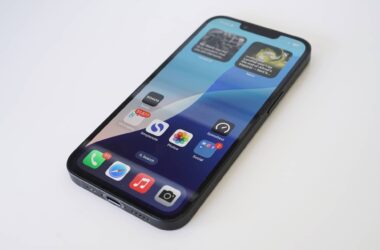Quick review
The good
The not-so-good
Samsung isn’t the only foldable phone maker in town. Oppo’s addition shows that someone else can unfold a big screen to go, and even innovate in ways you won’t expect.
Design
What happens when you take two phones and attach them by a hinge? You get the rough design of every foldable phone, the Oppo Find N3 included.
Like the Z Fold models we’ve seen before, the Oppo Find N3 is essentially one big phone with a special hinge that allows it to collapse into something smaller, but it can look like two phone halves connected.
Unfolded, the phone offers a thickness of 6.0mm spread out over an almost-square width of 143mm. Folded, however, and that width splits in half to around 73.3mm, while the thickness doubles to 11.9mm, just shy of the 12mm you were expecting. So unfolded, the Find N3 is sleek and slim, but folded for the pocket, and it’s a bit of a chunker, though that goes part and parcel with foldable phones today.
There’s about 239 grams of weight, too, but it’s not exactly unfriendly. The metal and glass design we played with, complete with the faux leather (vegan leather) textured back helps make the phone look different, all while keeping a sturdy appearance.
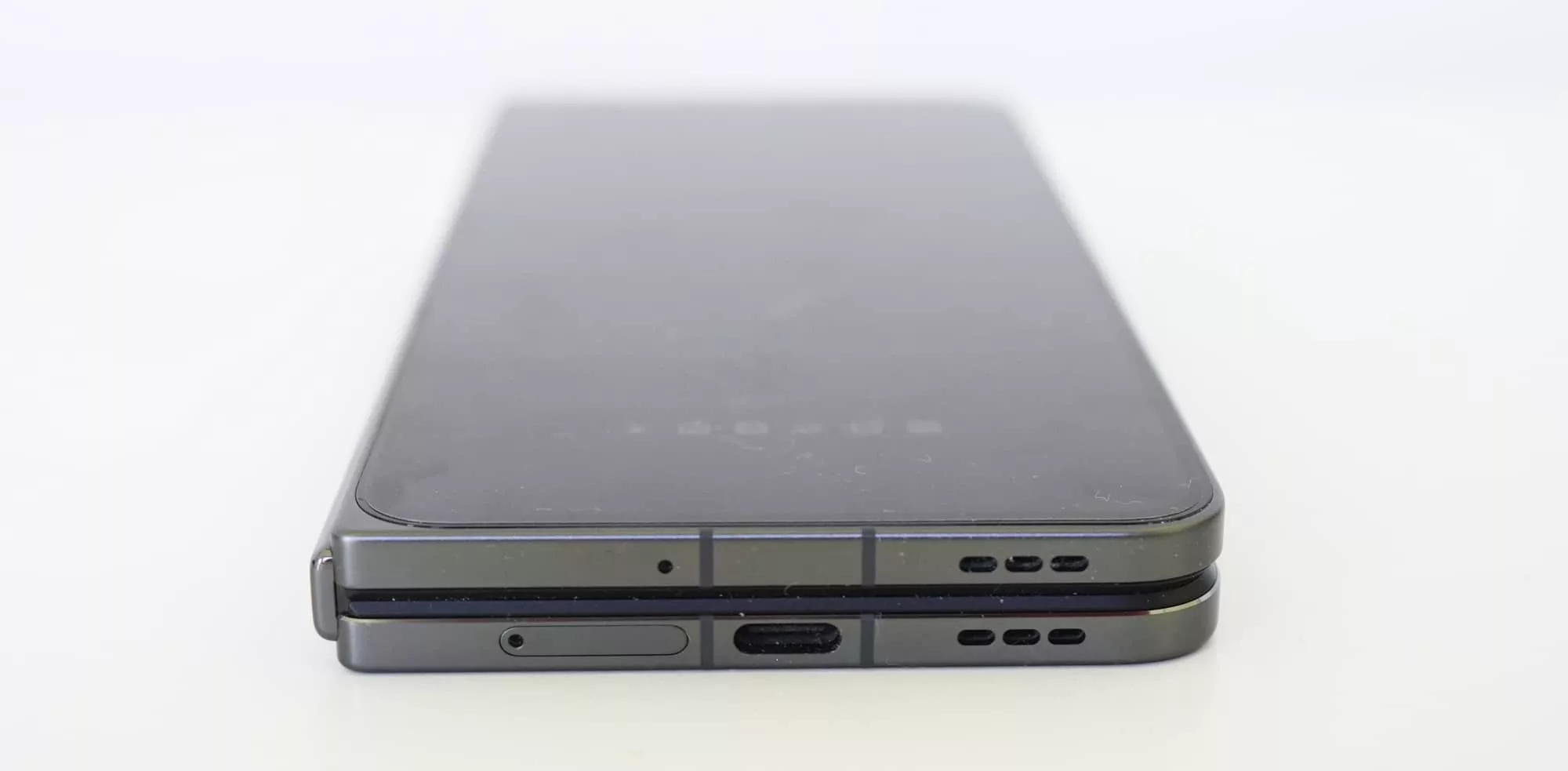
Features
Inside, you can expect high-end tech with Qualcomm’s Snapdragon 8 Gen 2 chip, 16GB RAM, 512GB storage, Android 13 with Color OS, and a 4805mAh battery.
There’s no wireless charging, which is a bit of an omission for a high-end phone, though it does support a 67W super fast charging capability, plus the usual dose of wireless features, including WiFi, Bluetooth, NFC, and GPS.
Oppo has included a reasonable amount of cameras, too, with five technically, covering three on the back, and one above each screen. Specifically, there’s a 48 megapixel F1.7 main camera covering 24mm, a 64 megapixel 3X telephoto F2.6 covering 70mm, and a 48 megapixel ultra-wide F2.2 that also covers macro mode. At the screen level, there’s a 32 megapixel F2.4 above the cover screen, while the main screen sees a 20 megapixel F2.2.
Oppo also notes in its Find N3 spec sheet that there’s a 16 megapixel 6X mode, but that it’s via “in-sensor zoom”, which is a handy way of saying the 64 megapixel 3X camera can crop down to a 16 megapixel digital zoom. It’s not really a camera, but it is what the 6X mode is mapped to. All up, five cameras for the Oppo Find N3.
| Model | Oppo Find N3 (CPH2499) |
| Chip | Qualcomm Snapdragon 8 Gen 2 |
| Memory & Storage | 16GB RAM, 512GB storage |
| OS | Android 13 |
| Cameras | 48mp F1.7 wide (24mm), 48mp F2.2 ultra-wide (24mm) 64mp F2.6 3X (70mm) |
| Connection | 5G (sub-6), WiFi 6E, Bluetooth 5.3, GPS, NFC, USB-C |
| Size | 6mm/11.9mm, 239g |
| Price | $2699 AUD |

Display
Two cameras for each screen are a thing, but we need to talk about those two screens, because they’re part of what make the phone special. They’re what help the phone stand out.
Like all foldable phones, there are two of them, with a screen on the outside — the cover screen — and a main screen on the inside, and they’re different.
On the outside, you’ll find the cover screen handles a 6.31 inch size which is a touch wider than we’re used to, giving you more of a conventional phone aspect ratio and a Full HD+ resolution of 2484×1116.
Meanwhile, On the inside, the unfolded screen is close to a square and more like the 4:3 panels some tablets offer, covering 7.82 inches diagonal with a resolution of 2440×2268. Both screens provide variable refresh rates of up to 120Hz, and a 10-bit 1.07 billion colour panel.
And both cover and main screen are easy on the eyes, bright, and lovely to look at.
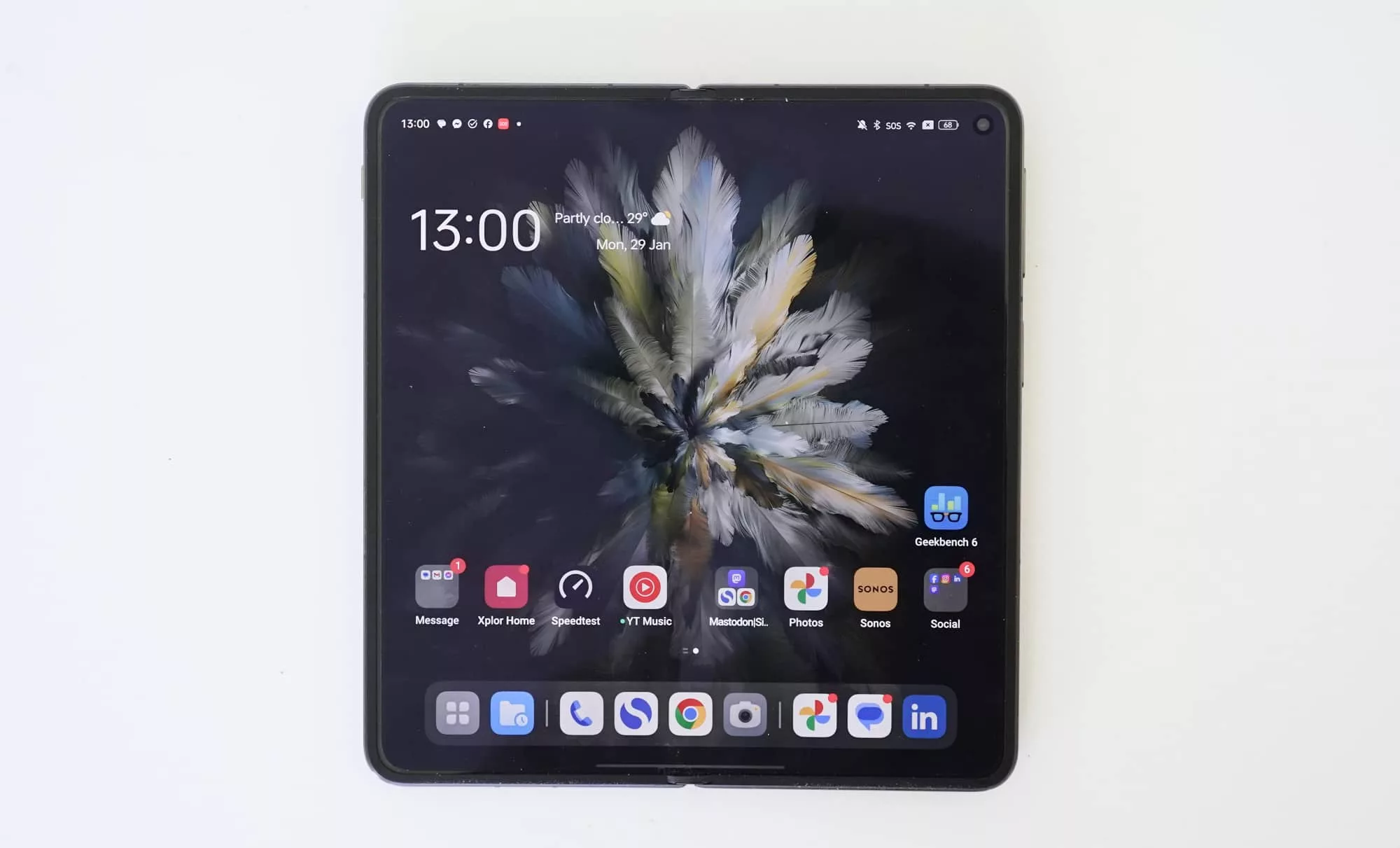
The extra width Oppo has gone with helps the phones feel larger and wider, and ultimately more usable.
When closed, you feel like the Find N3’s wider size makes it more usable like any other phone, and when open, you also have more screen real estate to consider. Bring along a small keyboard, and it could be a clever little productivity workstation when you’re stuck at an airport waiting for your next flight.
However, the screen also has another thing going for it: Oppo has one of the nicest foldable displays we’ve seen, delivering a virtually imperceptible display crease. You’ll have to look hard to see it on the LTPO3 OLED displays being used, and your fingers can barely feel it as they run across the stretch of the screen.
Oppo has built such an impressive foldable screen that in three generations of the Find N, it is delivering a better display than five generations of its most logical competitor, Samsung’s Galaxy Z Fold 5.
In-use

It’s not just the lovely displays that makes the Find N3 interesting, but also the software that works with them. Before we jump into the proper usability of the phone, it’s worth noting you’ll find a fingerprint sensor on the side and a facial login system, so you have biometrics largely covered.
Everything else is Android 13 with Oppo’s ColorOS on-top, but it’s not just Android. Oppo has made some tweaks.
While there’s no support for a stylus here, you do get an Android home screen setup that works the same regardless of whether it’s folded closed or open and unfolded, and that is unique.
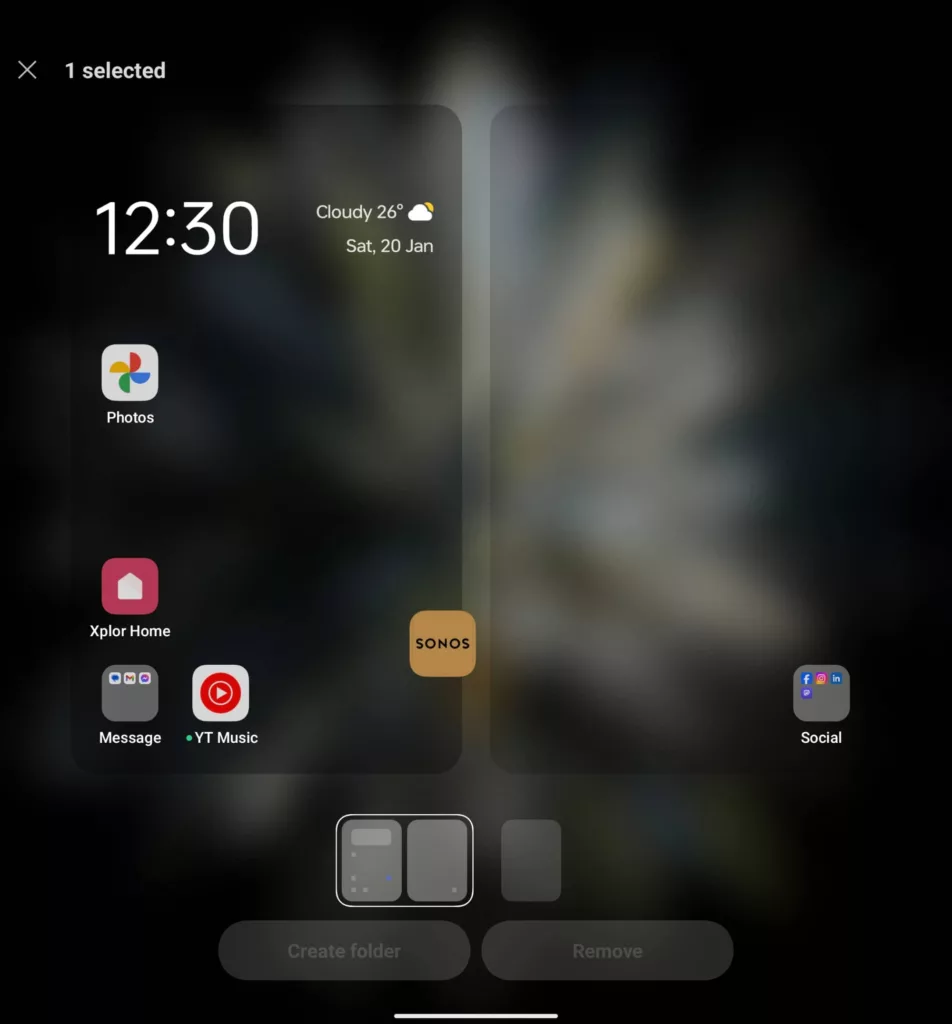


On other foldable phones we’ve seen, the widgets and app shortcuts between each screen are different, giving you the task of managing both. Oppo has found a way to link them, and they work really well.
That’s number one of the nice features Oppo has seen fit to include on the Find N3 foldable phone, because there are others, including an expandable dock, a clever split keyboard in the unfolded mode that duplicates some important keys to make it easier to type on while holding both sides with each hand, and some neat shortcuts like recent files that can open up in a small overlay.
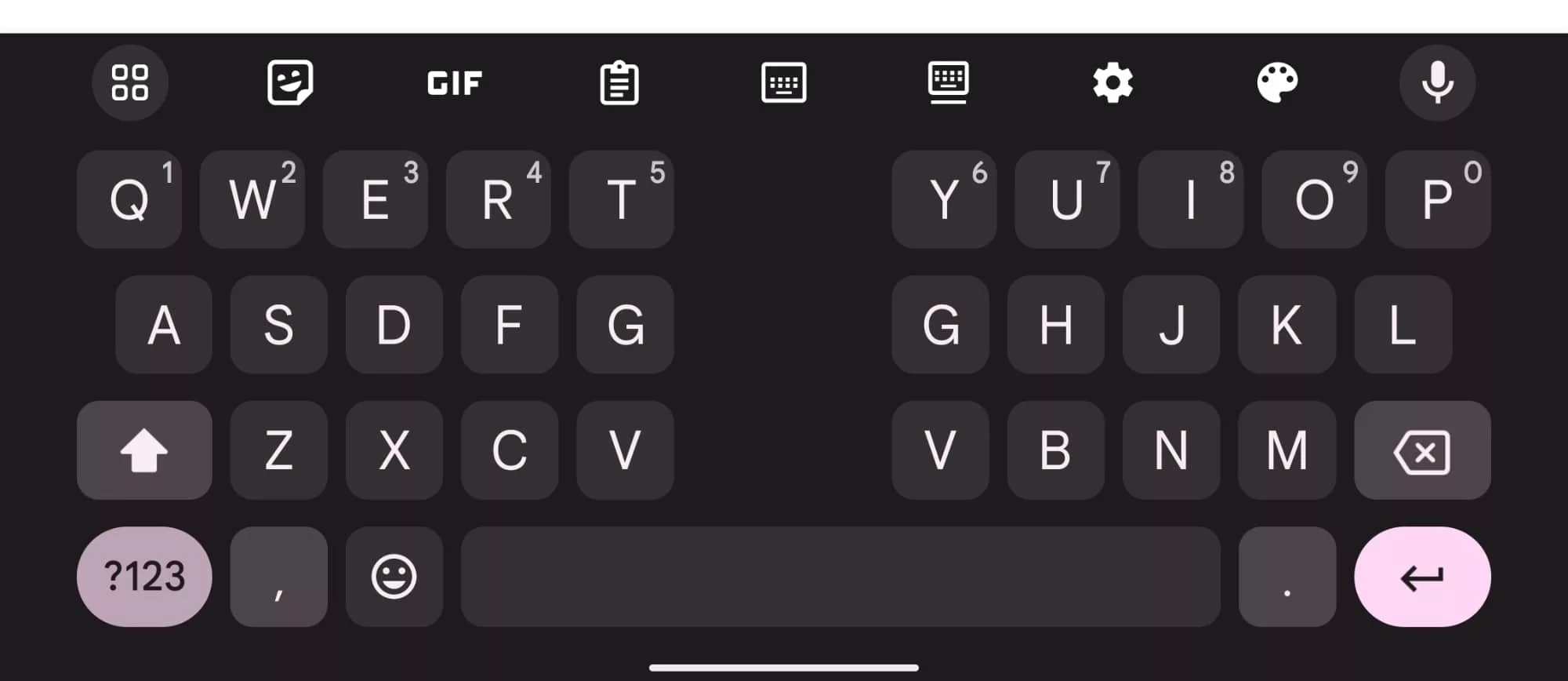
Quite possible the most useful feature is how Oppo’s Find N3 handles multi-tasking, which allows you to easily split the screen to cover three apps, one of which can hang off on the side and only be called in when it’s needed.
Called “Boundless View” — a name you will never use — Oppo’s multitasking feature means you can launch two full-screen apps in the unfolded mode and keep a third handy, and re-use them later. Oppo goes further by making that duo or trio of on-screen apps able as a shortcut, should you need it, so you don’t have to go and recall which apps you launched at any time.
The concept is very clever and works a treat. It’s one of those features where you’ll be surprised no one else in the Android ecosystem thought of it first. We’re several generations into foldable, and Oppo’s addition is an absolute star of a thing.

Performance
Inside, you’ll find Qualcomm’s Snapdragon 8 Gen 2, and unsurprisingly, it’s the same beast of a chip we’ve seen in phones for most of 2023. Flagship devices using this combination tend to be suitably fast, and the Oppo Find N3 is no different in this regard, delivering top notch performance while using apps and games, though we did find it lagged behind Samsung’s Z Fold 5 in at least one of the tests.
For the most part, we don’t expect the difference in benchmarks will bother anyone. The Find N3 is fast and responsive, and the 16GB RAM means there’ll be plenty of room for apps aplenty.
5G performance is decent, too, though your network will be the main limitation. Tested in Sydney, Australia with the Telstra 5G network by way of Mate’s speed limited mobile connection, we found surprisingly snapping speeds as high as 210Mbps in our Find N3 review period. Your mileage may vary, of course, but you should see decent speeds.
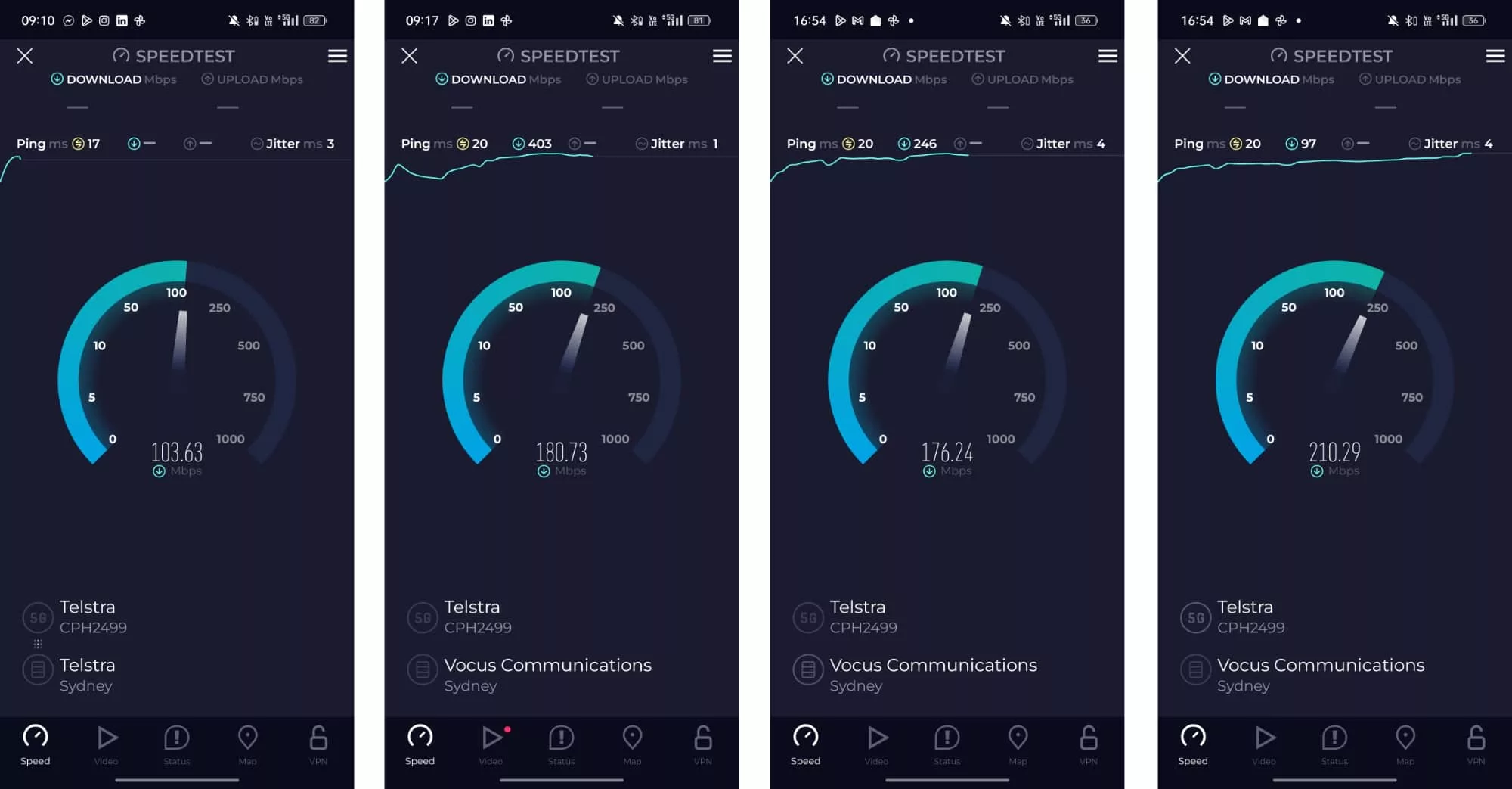
Camera
Next up is the three piece camera, which is about normal for foldables, running between great wide, and an acceptable telephoto and ultra-wide option.
Like with mobile speeds, the cameras on offer are very much a state of “your mileage may vary”, but we found the Find N3 camera delivered great images in daylight and decent images at night, though the clarity in low-light seemed to lose a little in the process.
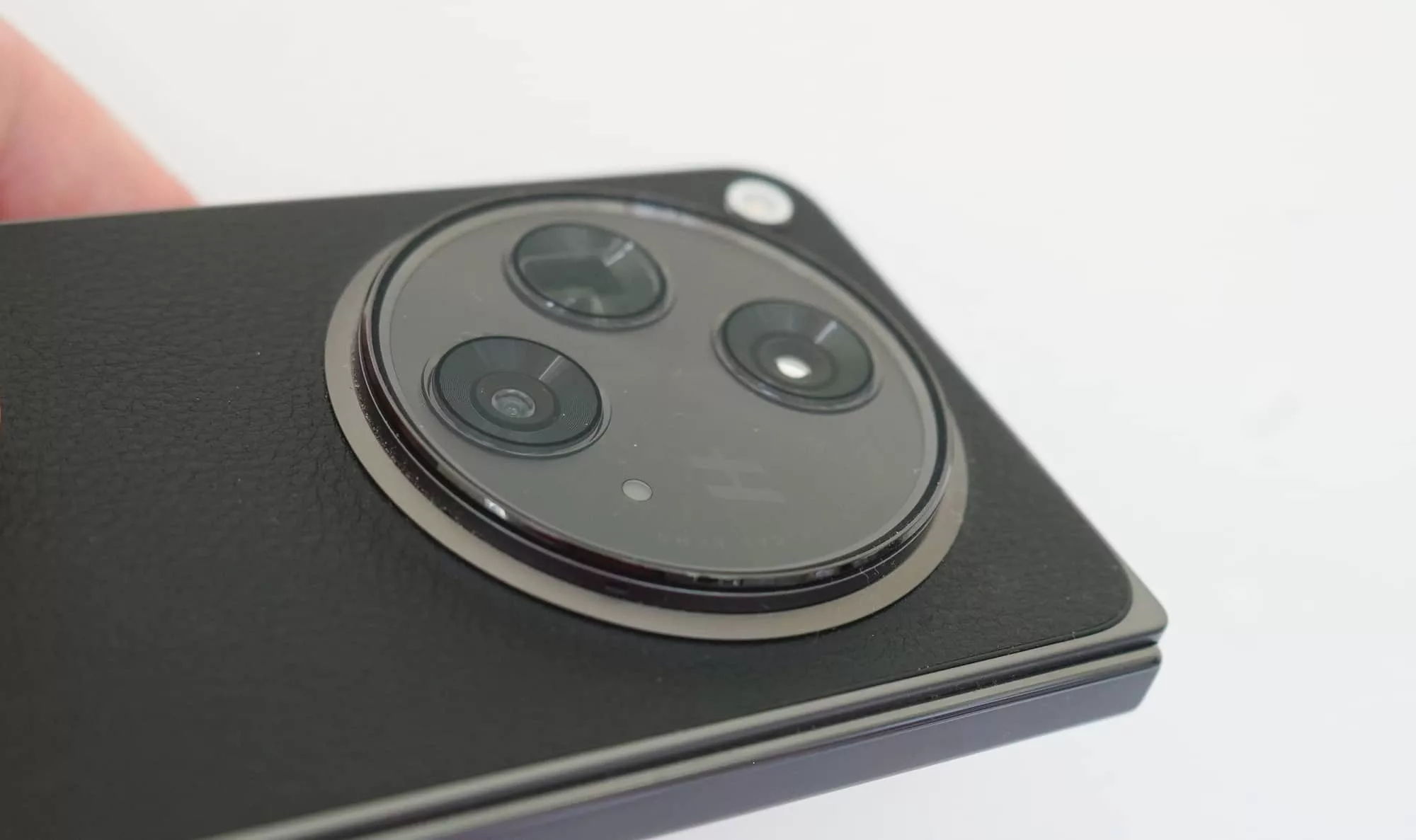
With plenty of light, all three cameras delivered lovely shots, and there’s a particularly interesting level of difference between the standard and capable wide camera, the ultra-wide and its decent zoom, plus the telephoto, which lets you get in a little bit, but mightn’t cover everyone’s needs.
You’ll also find the fun Hasselblad-connected modes here, including some preset image filters, plus the “XPan” mode inspired by the 35mm XPan panoramic camera Hasselblad makes, which can cover very long images or very tall images. It’s a clever inclusion, but one we doubt people will go out of their way to use.
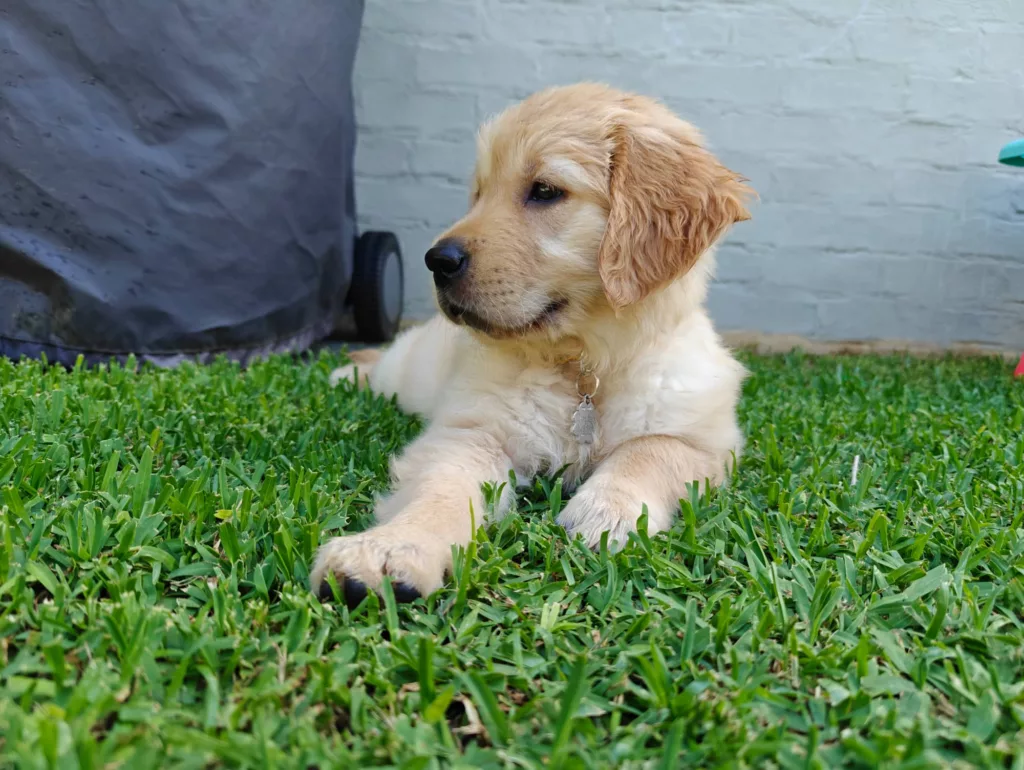




You’ll even find some of the niceties you might look for in other phone cameras here, such as a variety of other more useful modes, plus an editable portrait mode.
Spending time with the portrait mode will mean being able to control the aperture to simulate background focus, much like you can on the iPhone 15. We’re not quite sure it delivers quite the same level of control, particularly given how Apple has managed to make non-portrait images into portrait images, but it’s nice to have, that’s for sure.
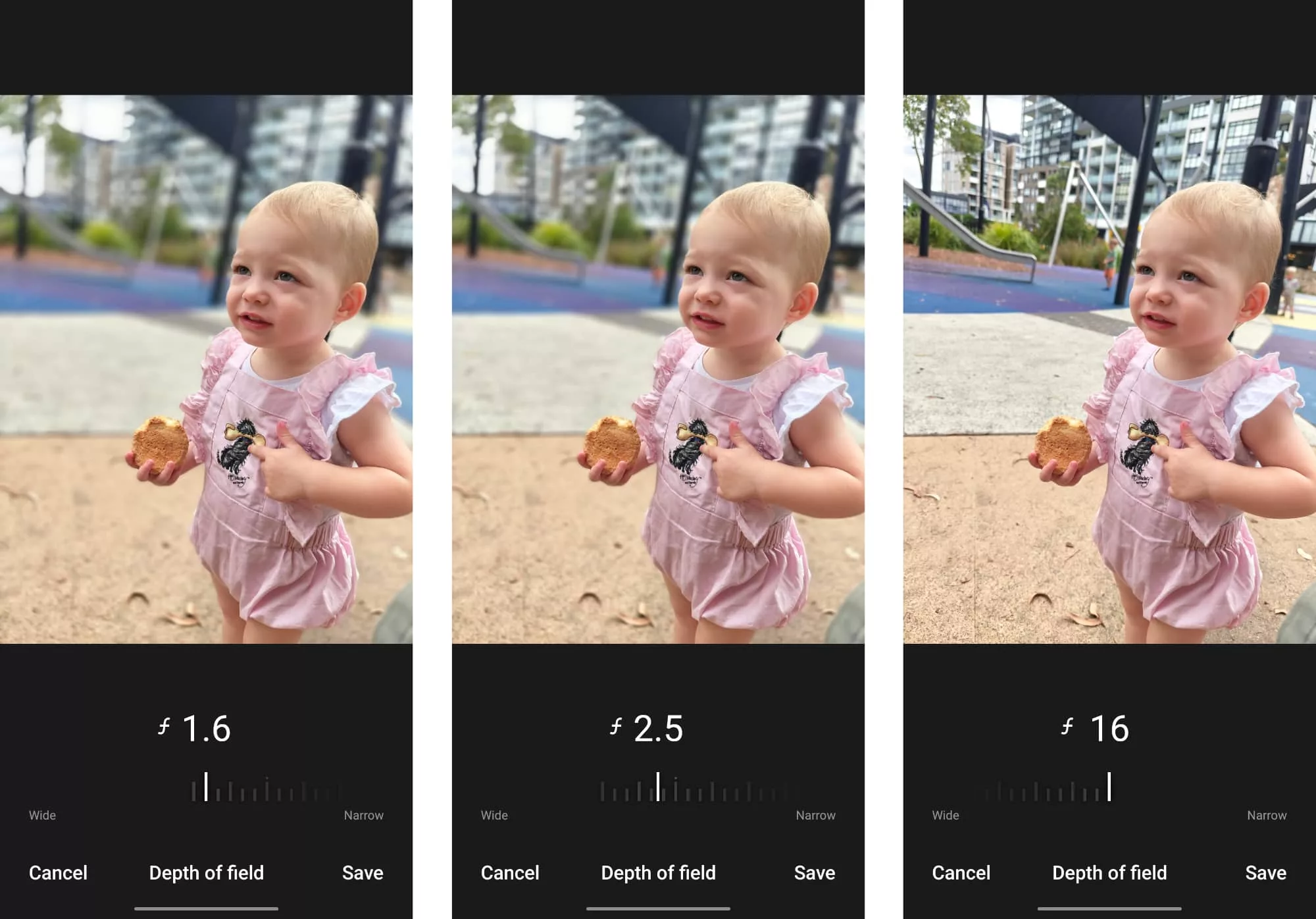
Battery
One area that didn’t win us over was the battery, which couldn’t get beyond the 18 hour mark.
Using the Find N3 as mostly a phone and rarely opening up the tablet saw it lasting only from 6am to 9pm, just barely over 12 hours. Open the tablet more often and use that big screen, and the life was closer to 12 hours.
That is an astonishingly unimpressive battery life, especially for a phone attracting such a high price.
You’ll also only find USB-C charging here, with no wireless charging to speak of, but to Oppo’s credit, at least it’s the high-speed SuperVooc charging the company pioneered, so recharging shouldn’t take long, but still.
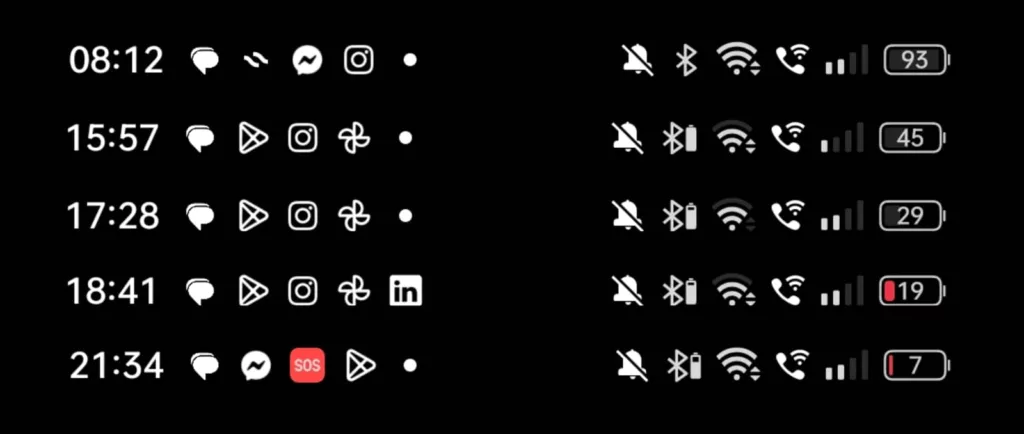
Value
The other critical factor is the price, which sees the Find N3 priced at $2699 in Australia. No doubt, that’s not cheap, though it competes with very few devices at all, roughly targeted at the only other foldable tablet phone in Australia, the Samsung Galaxy Z Fold 5.
Samsung’s Z Fold 5 starts from $2599, though it’s also an utterly ordinary foldable, with very few improvements to speak about since previous versions. For reviewers like us, it means suggesting you look at the older and likely less expensive models might help you save some money on a foldable if you really crave one.
If you have money to spare, the Oppo Find N3 is costly but still lovely, delivering plenty of tech for the price, but it’s hardly value-driven. It just costs money, and a reasonable amount of it to begin with.
What needs work?
That price is sure a point of contention, but so is the lack of wireless charging and questionable water resistance, which is a ho-hum IPX4. That’s basically splash resistance, but nothing else.
Don’t put the Find N3 under a tap. Don’t bring it in the pool. Don’t take it near a beach. It has no ingress protection for particles and isn’t super friendly to water, either.
The camera bulge may also leave you feeling a little ho-hum, which isn’t just surprisingly thick, but forces the phone to kind of lean over when flat. It’s just thick enough to throw out the balance, because there’s nothing else pushing up the other side of the phone.
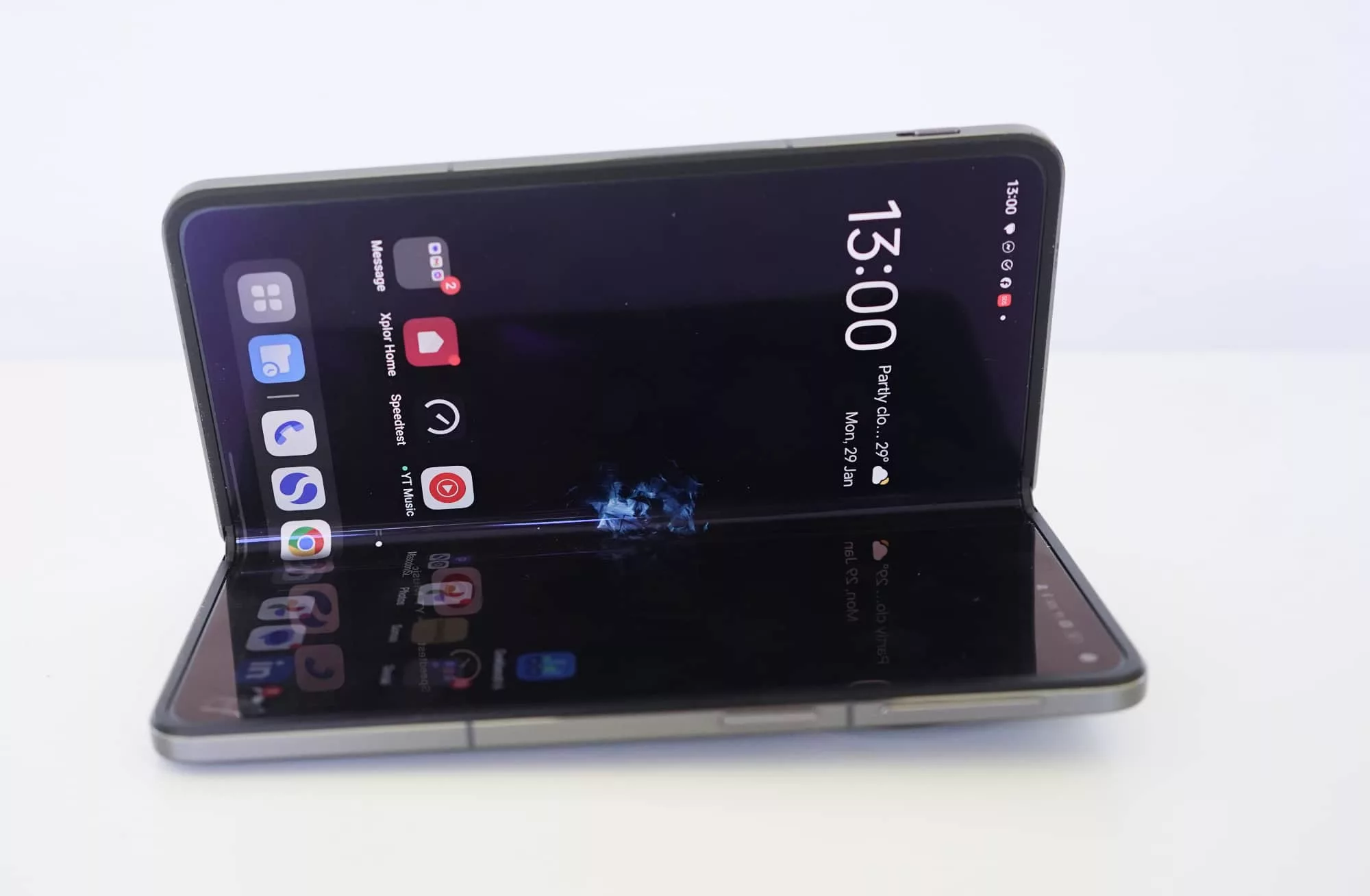
Holding the Find N3, you’ll never notice it, but rest it on a surface and you definitely will. It leans over and lacks the stability of so many other phones.
The lack of wireless charging is a touch frustrating for folks who think it should be there on a high-end phone. It won’t upset everyone.
But the battery will.
You cannot make it through a single day of use with the Find N3 foldable phone. Even with light use, the phone struggles to hit a full 24 hours. Stay within reach of a wired charger.
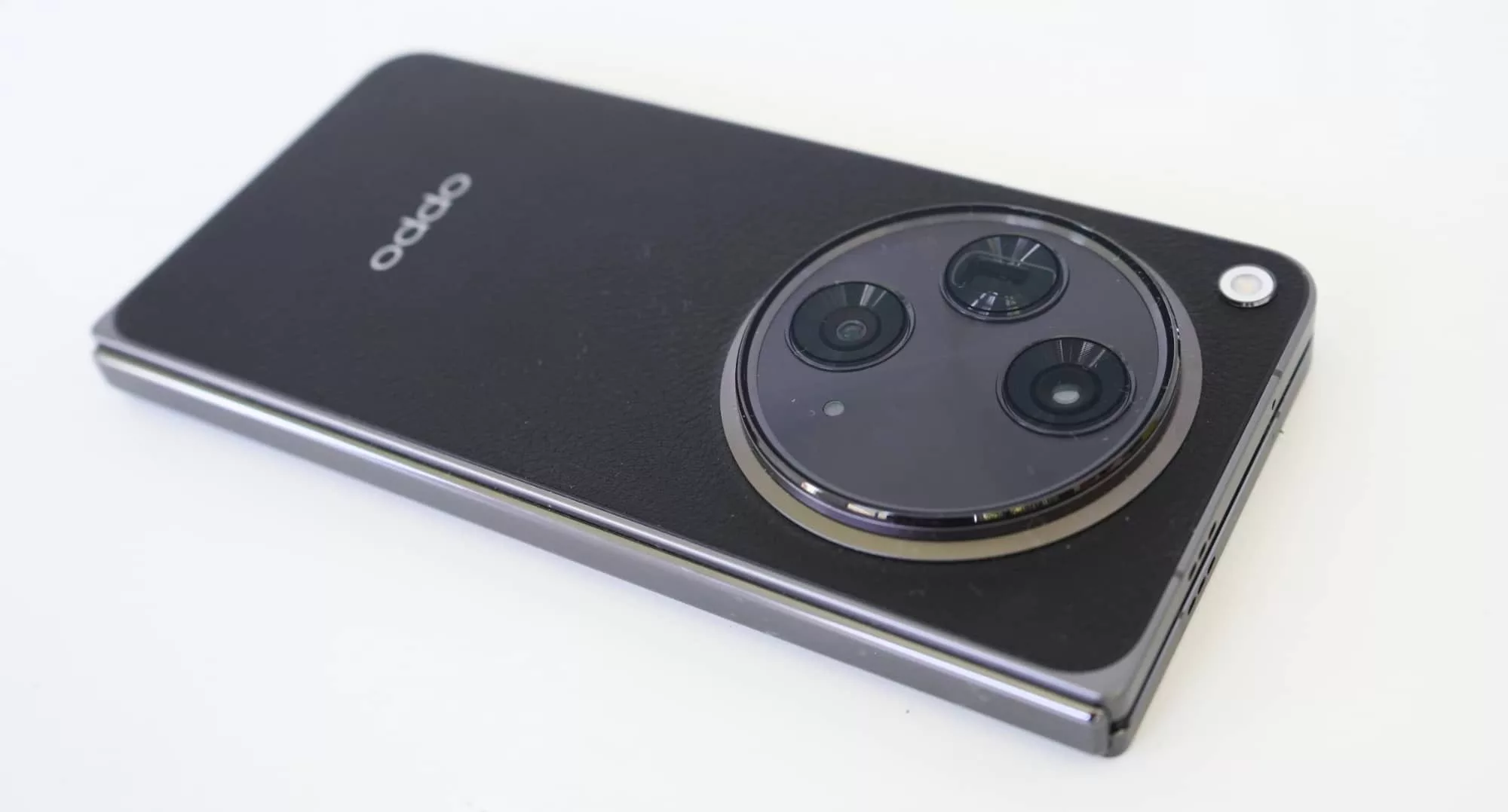
Final thoughts (TLDR)
Worth pointing out that even if all of this entices you to buy a Find N3, Oppo Australia has officially sold out of them.
At the end of the review period, Oppo noted to Pickr that:
“The OPPO Find N3 has now sold out locally, as the demand from Australian customers far exceeded our expectations. We sincerely thank our valued customers for their overwhelming support and apologise for any inconvenience caused. We appreciate your understanding and look forward to bringing you more innovative products in the future.”
In essence, even if you did love everything here, you may need to find an alternate path for buying one, such as through another country or just waiting for the new model to arrive.
Understandably, that makes the final score of the Oppo Find N3 Review a little complex: it’s a great phone with mediocre battery life and a hefty price, but it also doesn’t matter. You can’t buy it in Australia anymore.
It was announced at the end of October, released a few weeks later, and barely three months into its life, the Find N3 can’t be found in Australia. All we can say about that is “well that escalated quickly”.
If Oppo finds a way to un-escalate it quickly, and also lowers the price to make it more competitive, the Find N3 could prove to be a brilliant foldable worthy of anyone who wants one. Premium in almost every way, it’s the foldable evolution we all deserve. Even if we can’t buy one anymore.







